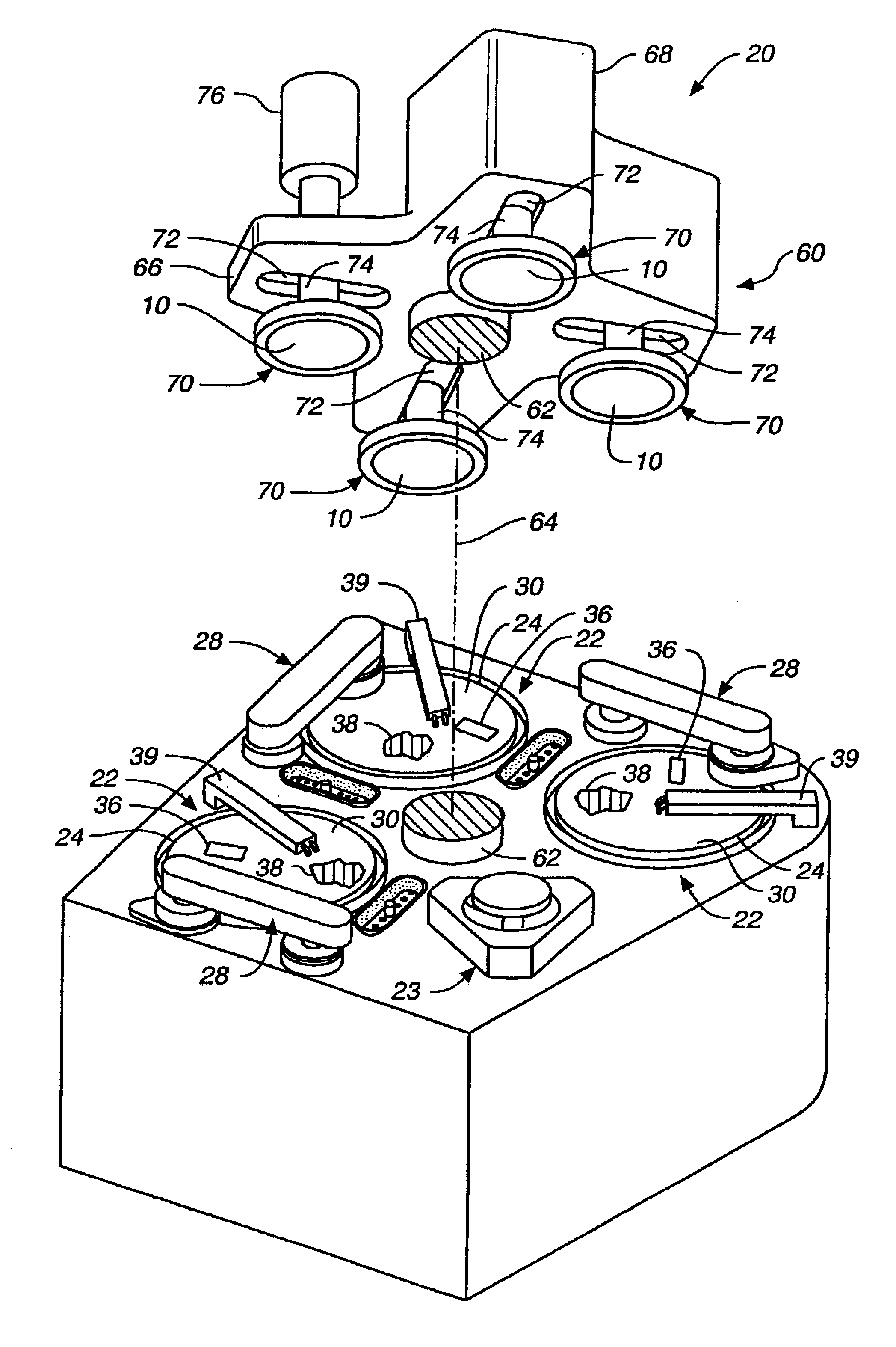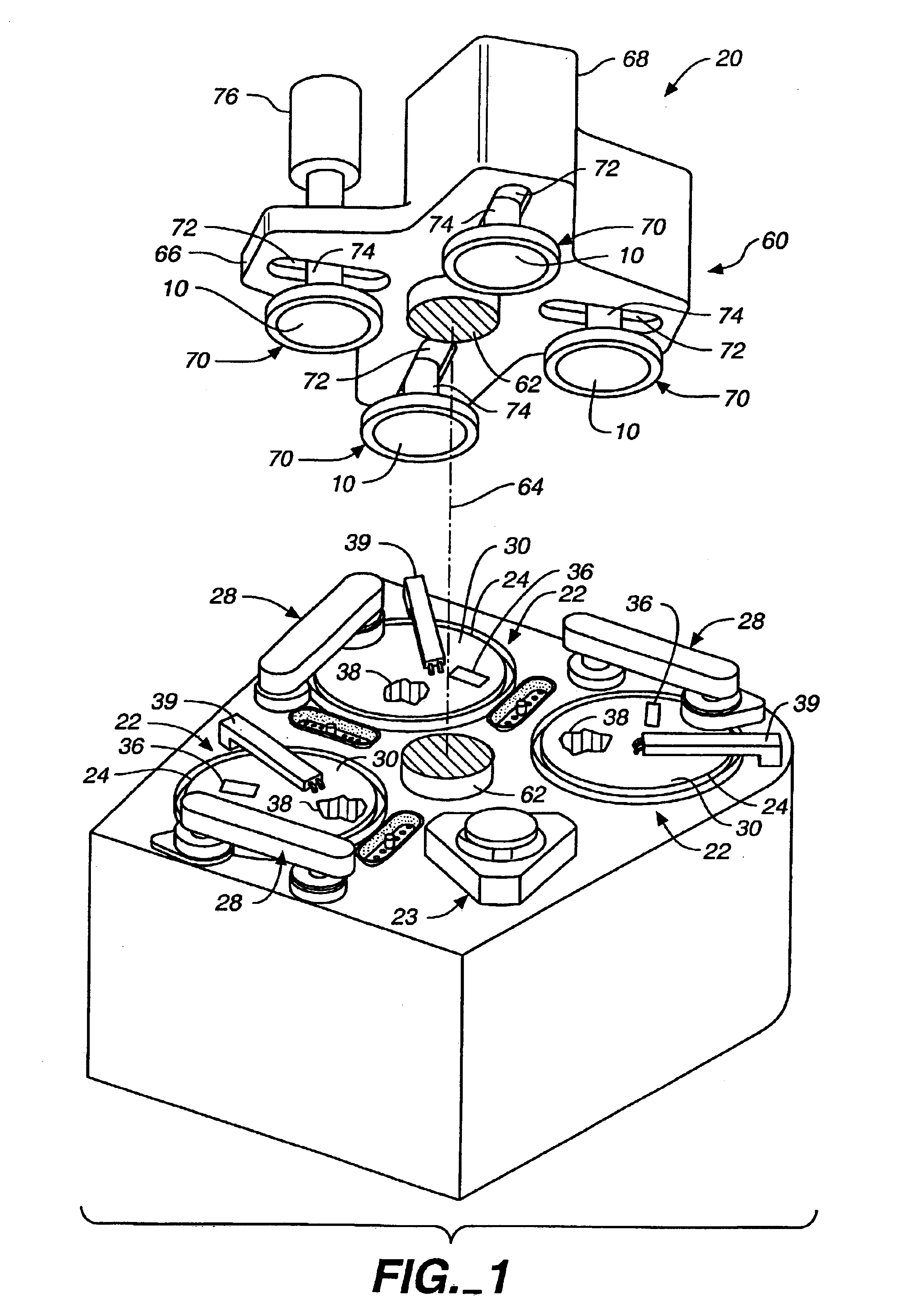Chemical mechanical polishing of a metal layer with polishing rate monitoring
a technology of mechanical polishing and monitoring of the polishing rate, which is applied in the direction of lapping machines, instruments, manufacturing tools, etc., can solve the problems of reducing the throughput of the cmp apparatus, affecting the use of the substrate, and affecting the polishing rate, so as to achieve the effect of reducing overpolishing and underpolishing, preventing electrical shorting, and high accuracy
- Summary
- Abstract
- Description
- Claims
- Application Information
AI Technical Summary
Benefits of technology
Problems solved by technology
Method used
Image
Examples
Embodiment Construction
Referring to FIGS. 1, one or more substrates 10 can be polished by CMP apparatus 20. A description of a similar polishing apparatus 20 can be found in U.S. Pat. No. 5,738,574, the entire disclosure of which is incorporated herein by reference. Polishing apparatus 20 includes a series of polishing stations 22a, 22b and 22c, and a transfer station 23. Transfer station 23 transfers the substrates between the carrier heads and a loading apparatus.
Each polishing station includes a rotatable platen 24 on which is placed a polishing pad 30. The first and second stations 22a and 22b can include a two-layer polishing pad with a hard durable outer surface or a fixed-abrasive pad with embedded abrasive particles. The final polishing station 22c can include a relatively soft pad or a two-layer pad. Each polishing station can also include a pad conditioner apparatus 28 to maintain the condition of the polishing pad so that it will effectively polish substrates.
Referring to FIG. 3A, a two-layer p...
PUM
| Property | Measurement | Unit |
|---|---|---|
| capacitance | aaaaa | aaaaa |
| resonant frequency | aaaaa | aaaaa |
| resonant frequency | aaaaa | aaaaa |
Abstract
Description
Claims
Application Information
 Login to View More
Login to View More - R&D
- Intellectual Property
- Life Sciences
- Materials
- Tech Scout
- Unparalleled Data Quality
- Higher Quality Content
- 60% Fewer Hallucinations
Browse by: Latest US Patents, China's latest patents, Technical Efficacy Thesaurus, Application Domain, Technology Topic, Popular Technical Reports.
© 2025 PatSnap. All rights reserved.Legal|Privacy policy|Modern Slavery Act Transparency Statement|Sitemap|About US| Contact US: help@patsnap.com



